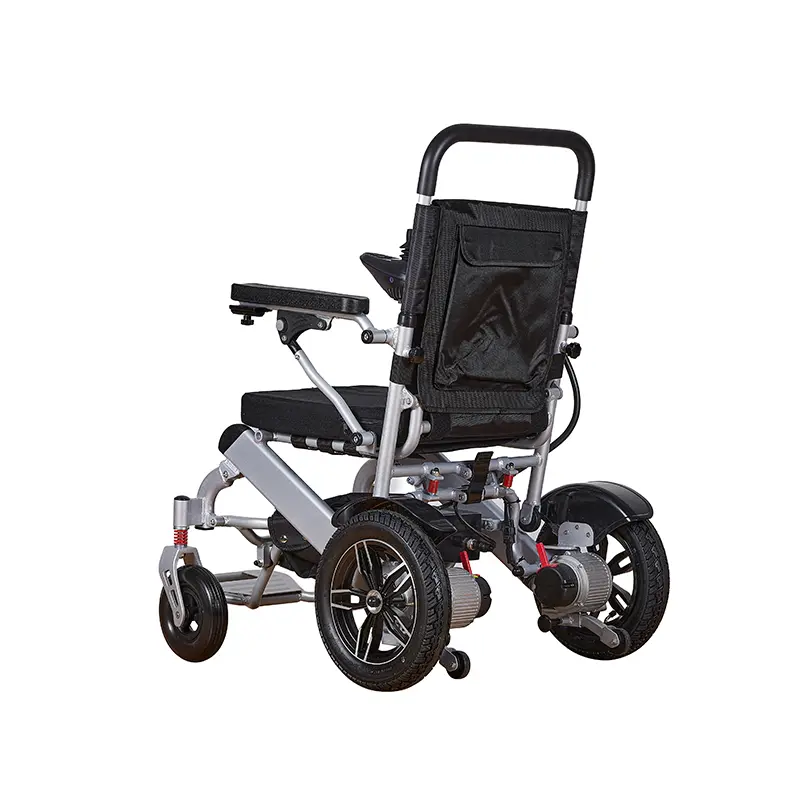Electric wheelchairs comply with the medical device safety standards of the Italian CE certification
Foreword
As the global population aging trend intensifies, the market demand for electric wheelchairs as an important auxiliary mobility device continues to increase. For international wholesale buyers, ensuring that electric wheelchairs comply with relevant safety standards is the key to entering the market. In Italy, electric wheelchairs must comply with the EU CE certification requirements before they can be legally sold. This article will provide a detailed introduction to the medical device safety standards that electric wheelchairs comply with the Italian CE certification to help international wholesale buyers better understand this certification process.
1. Applicable regulations
Electric wheelchairs must comply with the EU CE certification requirements for sale in the Italian market and are classified as Class IIa medical devices. The following are the main regulations that electric wheelchairs must comply with:
EU Medical Device Regulation MDR (EU) 2017/745: This is the main regulation for electric wheelchairs as medical devices.
Low Voltage Directive LVD 2014/35/EU: If the electric wheelchair is powered by electricity, it must comply with this directive.
Electromagnetic Compatibility Directive EMC 2014/30/EU: Generally applies to electric wheelchairs to ensure that they work properly in an electromagnetic environment.
“Batteries and Accumulators Regulation”: If an electric wheelchair uses lithium batteries, it must comply with this regulation.
2. Key standards that must be met
For an electric wheelchair to comply with CE certification, it must meet the following key standards:
EN ISO 13485: Quality management system for medical devices, companies must establish a quality system.
EN ISO 14971: Risk management for medical devices, risk assessment of the entire life cycle of the device.
EN 12184: General safety requirements for electric wheelchairs, performance, safety and test method standards specifically established for electric wheelchairs.
EN 60601-1: General requirements for medical electrical equipment, electrical safety, basic performance standards.
EN 60601-1-2: Electromagnetic compatibility requirements, EMC compatibility test standards.
EN 62366: Medical device usability engineering, to ensure user friendliness and avoid misoperation.
EN ISO 10993 series: Biocompatibility testing, for biosafety assessment of skin contact materials.
3. Technical Document Requirements
The following documents must be prepared for CE certification:
Device Risk Assessment Report: Risk assessment is conducted in accordance with ISO 14971.
Design drawings, functional descriptions, user manuals: Detailed description of the product design and functions.
Test Report: Tested in accordance with EN 12184 and EN 60601 series.
EMC Test Report: Electromagnetic compatibility test is conducted in accordance with EN 60601-1-2.
Battery Safety Report: If lithium batteries are used, test in accordance with IEC 62133 or UN38.3.
Biocompatibility Test Report: If there are parts that contact the skin, biocompatibility testing is required.
Clinical Evaluation Report: Evaluate the clinical performance and safety of the product.
Declaration of Conformity (DoC): Declare that the product complies with all applicable regulations and standards.
Instructions for Use: Provide the Italian version of the instructions for use.
4. Certification Process
The CE certification process for electric wheelchairs is as follows:
Product classification and compliance path determination: Determine that the product belongs to Class IIa medical device.
Prepare technical documents: Prepare all the technical documents mentioned above.
Commission a Notified Body: Review technical documents and audit the quality system (ISO 13485).
Obtain CE Certificate (EC Certificate) after passing the audit: The Notified Body issues the CE Certificate after passing the audit.
Issue a Declaration of Conformity (DoC): The manufacturer issues a Declaration of Conformity.
Paste the CE mark on the product: After the product passes the certification, paste the CE mark and enter the Italian market.
5. Tips
Italian regulatory agency: The regulatory agencies in Italy are AIFA (Italian Medicines Agency) and Ministero della Salute (Italian Ministry of Health), and the product must also be registered in the Eudamed system.
Additional testing: Electric wheelchairs are live products, and it is recommended to perform additional IEC 60601-1 safety testing to improve global compatibility.
6. Summary
The key to entering the Italian market is that the electric wheelchair complies with the medical device safety standards of the Italian CE certification. By following the above regulations and standards, preparing the necessary technical documents, and completing the certification process, manufacturers can ensure that their products meet the safety and quality requirements of the Italian market.
Post time: Jul-25-2025


